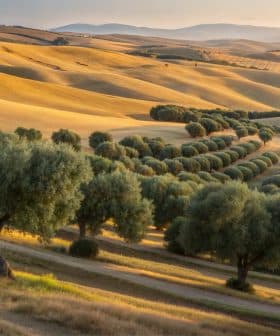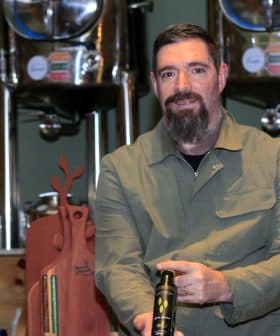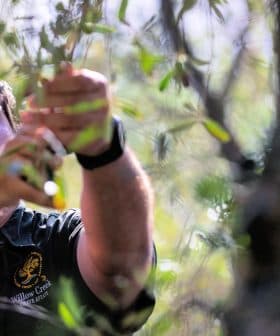Award-Winning French Producer Looks to The Past to Meet Challenges of The Future
Maintaining organic farming methods and experimenting with ancient olive varieties are how Château d’Estoublon keeps its 500-year olive oil production history alive.
 Château d'Estoublon
Château d'Estoublon Château d’Estoublon, located in the Vallée des Baux-de-Provence, is a large estate that maintains the tradition of producing high-quality olive oil and wine. The estate has received several Protected Designation of Origin certifications for its olive oils, and it follows strict organic and sustainable farming practices to protect its olive varieties from the effects of climate change. Despite challenges such as reduced volumes due to unseasonable frosts and water scarcity, the estate continues to experiment with new irrigation techniques and recover forgotten olive cultivars to adapt to the changing climate and ensure future production.
Vines and olive groves dot the Vallée des Baux-de-Provence, the renowned olive-producing region in southern France delimited by white limestone mountains and colored by the distant red reflections of the bauxite ore.
Situated in the heart of the Alpilles Regional Nature Park are the large estates that keep the millennium-old tradition of olive oil excellence alive.
The château has also recovered a number of forgotten olive cultivars that were once grown in the region… that could help us in the future to keep up with the production and withstand the effects of climate change.
Château d’Estoublon welcomes visitors to the 200-hectare estate that first began growing olives in 1489. It became the cradle of some of the region’s most prestigious wines and olive oils through centuries and generations.
See Also:Producer ProfilesThe high-quality table olive and extra virgin olive oils of the valley have received several Protected Designation of Origin certifications. Since 1997, three PDOs have been applied to black olives, the broken green olives (known as olives cassées) and extra virgin olive oil obtained from two local varieties.
In terms of volume, the local extra virgin olive oil represents the most relevant of the eight olive oil PDOs registered in France.
“Our products are very well known for their quality, especially our wine and olive oil, a tradition to which the estate has added vegetable gardens,” Anaïs Maillet, technical director of the estate, told Olive Oil Times. “These protect biodiversity and increase the number of products served at the château restaurant.”
Spanning more than 120 hectares, the château’s olive groves are composed of local olive cultivars, including Bouteillan, Grossane and Salonenque along with Beruguette and Picholine.
The characteristics of more than 20,000 olive trees allow the yearly production of some highly-rated monovarietal extra virgin olive oils, which have repeatedly won awards at international competitions, most notably the 2021 NYIOOC World Olive Oil Competition.
“We enjoy growing these varieties and working on the monovarietal olive oils because they are a true opportunity to show our identity,” Maillet said.
The estate also produces PDO extra virgin olive oils made from a blend of olive varieties. The blend is balanced and characterized by its green color, and artichoke, tomato, apple, strawberry, prune and chocolate flavors.
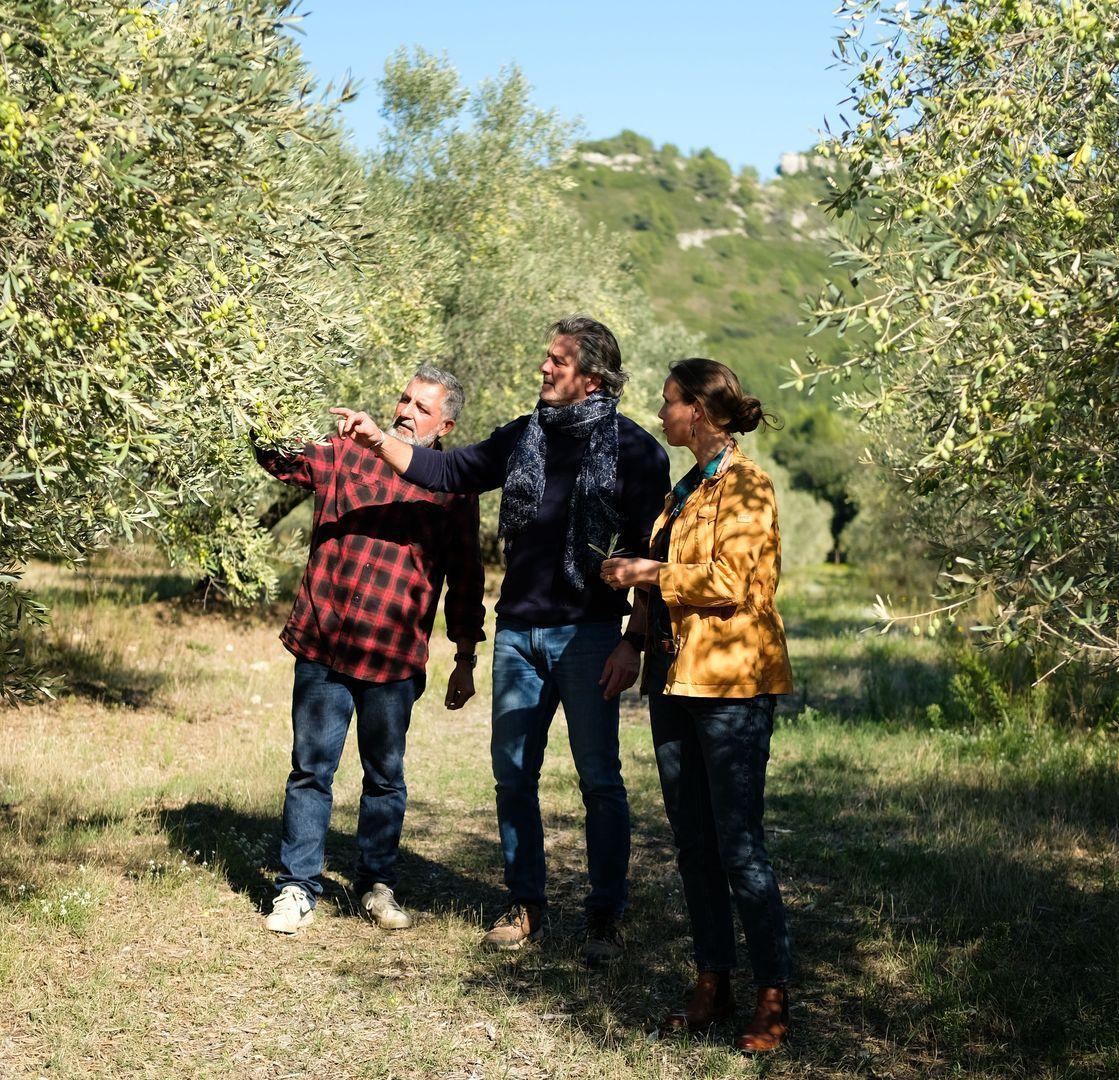
Records at the château show that this olive oil blend has been produced since 1786 when the Abbé Claude Couture decided to produce olive oil after taking an inventory of all the olive trees on his land. These trees continue to produce the olives used in the blend.
The olives are harvested between November and December and transformed within 24 hours at the château’s mill, which boasts equipment that allows the team to process each olive variety separately.
The goal is to enhance and protect all of the estate’s olive varieties, regardless of whether they are destined for monovarietal or blends.
For the past two decades, Château d’Estoublon has followed a strict regimen of organic practices, applying them to all of its groves, vines and gardens.
“All our work in agriculture, the very essence of what we do, is organic and sustainable, a choice we made more than 20 years ago,” Maillet said. “Those are now practices we have explored fully and are still working to innovate them. It is in our DNA.”
“Many years ago, we also began using biodynamic techniques, applying them first to viticulture and then expanding them to our olive orchards and our vegetable gardens,” she added.
The decision to convert to organic and sustainable farming methods affects how the olive trees are cared for, from the fertilization to the re-use of vegetable waste.
See Also:Record Year for French Producers at World Olive Oil Competition“We went back to the basics of farming and focused on innovating through a strategy of reuse,” Maillet said. “This means, just to make an example, that the drupes’ stones are gathered after transformation and added to the compost, which will subsequently be used as fertilizer for the olive trees themselves.”
After unseasonable springtime frosts blanketed the south of France in April, Maillet confirmed that volumes had been reduced – as they have been elsewhere in Baux-de-Provence – but the quality was unaffected.
She explained that the château’s efforts to maintain sustainable agricultural practices are hindered by climate change, which requires Maillet to adjust farming practices and adopt mitigation strategies.
“Right now, we have to face frost events, such as those we had in the spring, which were once very rare,” she said. “In these times, we are working to face and overcome the diminished availability of water for irrigation, which represents a growing challenge here and elsewhere.”
She added that solutions to these new and pervasive climate issues would only come from all the region’s olive growers sharing their experiences and ideas.
To mitigate the effects of climate change, Château d’Estoublon is currently experimenting with new irrigation techniques and working to optimize the use of water while also doing some experiments.
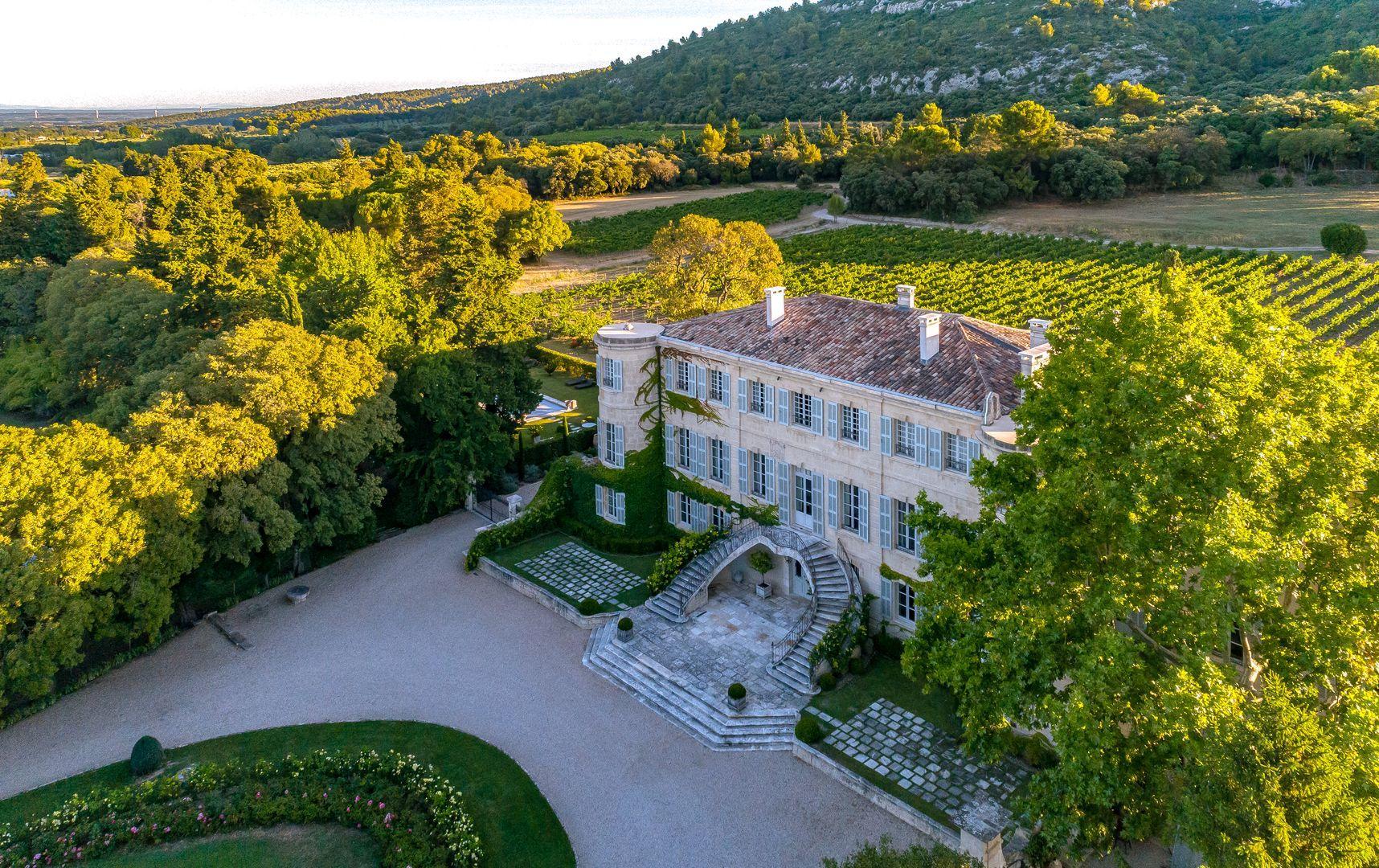
Among these is the fermentation of leaves and wood remains, using their bacteria and fungi to maintain moisture and increase the efficiency of irrigation.
“That is something we are researching and that we are seeing how well it seems to work in helping our trees,” Maillet said. “We hope we will soon be able to share such a technique.”
“Not only that, but the château has also recovered a number of forgotten olive cultivars that were once grown in the region,” she added. “These varieties, through many generations, ended up being marginalized because of their characteristics.”
“But it is those specifics, such as resilience to low rainfall and irrigation, that could help us in the future to keep up with the production and withstand the effects of climate change,” Maillet continued.
To that end, the château has started an experimental grove. It will be closely monitored and studied to verify how the trees react to the new climate the region has begun to experience.
“Among this panel of varieties, which over time had been discarded because of insufficient production capacities, we believe we could find at least some answers to the production problems olive producers could be facing in the future,” added Maillet.
However, these efforts remain a work in progress, she said, adding that in the world of olive oil, there is “much we still have to explore, so much we still have to learn.”
Share this article



